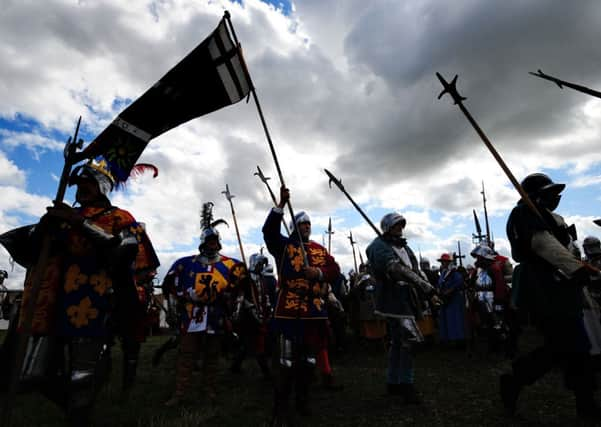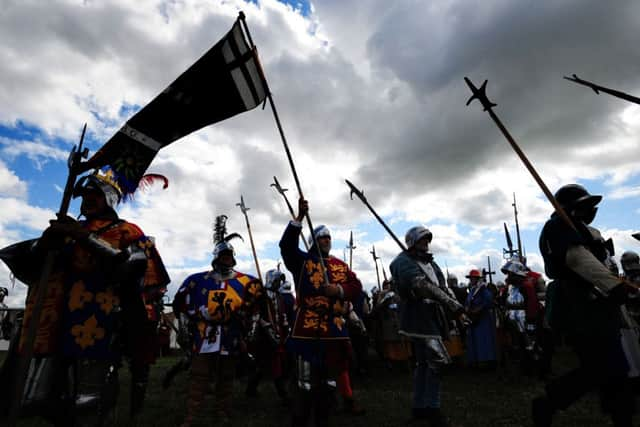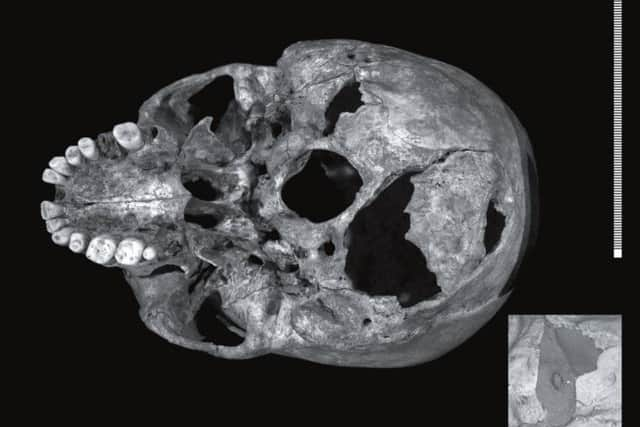Revealed: fatal blows which led to death of a monarch


Now more than 500 years after Richard III became the last English monarch to die in battle, scientists have used modern forensic techniques to identify the fatal blows that led to the loss of his life. New research led by the University of Leicester gives an account of the wounds inflicted at the Battle of Bosworth in 1485.
Analysis of his skeletal remains reveals that three of his injuries had the potential to cause death quickly — two to the skull and one to the pelvis.
Advertisement
Hide AdAdvertisement
Hide AdThe results, published in The Lancet, show Richard’s skeleton sustained 11 wounds at or near the time of his death, nine to the skull, clearly inflicted in battle and suggesting he had removed or lost his helmet, and two to the postcranial skeleton.


Sarah Hainsworth, study author and Professor of Materials Engineering at the University of Leicester, said: “Richard’s injuries represent a sustained attack or an attack by several assailants with weapons from the later medieval period.
“The wounds to the skull suggest that he was not wearing a helmet and the absence of defensive wounds on his arms and hands indicate that he was otherwise still armoured at the time of his death.”
Investigators, led by Dr Jo Appleby of the university’s School of Archaeology and Ancient History, surmise the postcranial injuries, including a potentially fatal one to the pelvis, might have been inflicted after Richard’s death, because if he had he been alive he would have been wearing a type of armour worn in the late 15th Century that would have prevented such wounds.
Advertisement
Hide AdAdvertisement
Hide AdProfessor Guy Rutty, study co-author, from the East Midlands Pathology Unit at the university, said: “The most likely injuries to have caused the king’s death are the two to the inferior aspect of the skull — a large sharp force trauma possibly from a sword or staff weapon, such as a halberd or bill, and a penetrating injury from the tip of an edged weapon. Richard’s head injuries are consistent with some near-contemporary accounts of the battle, which suggest that Richard abandoned his horse after it became stuck in a mire and was killed while fighting his enemies.”


Archaeologists discovered the king’s remains in Leicester in 2012 under a car park that was once the site of a church. It is thought likely he would have been buried with a proper, although perhaps minimal service.
Once the initial furore died down however a battle ensued about where he should be buried. The Plantagenet Alliance led a campaign for his body to be reburied in York. But after a legal battle, his remains will instead be re-interred in Leicester Cathedral.
Scientists used whole body CT scans and micro-CT imaging of the injured skeleton to analyse trauma carefully and to determine which of the king’s wounds might have proved fatal. They also analysed tool marks on bone to identify the medieval weapons potentially responsible for his injuries.
Advertisement
Hide AdAdvertisement
Hide AdDr Heather Bonney, of London’s Natural History Museum said: “Unfortunately, the nature of Richard III’s injuries, in that they occurred to separate circumscribed areas, means that the order in which they were inflicted cannot be established.”
But she added: “Appleby and colleagues provide a compelling account, giving tantalising glimpses into the validity of the historic accounts of his death.”